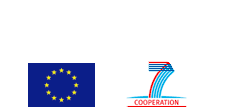ASEM WaterNet
Multi-stakeholder platform for Asia Europe Meeting Science and Technology Co-operation on Sustainable Water Use
Introduction
ASEM WaterNet (EU Sixth Framework Programme, Priority A.2 “Rational use of natural resources” Project no: PL 510897) is a multi-stakeholder platform for Asia Europe Meeting (ASEM) Science and Technology Co-operation on Sustainable Water Use. This Platform includes 35 participating organizations from Europe and Asia, and the project is running from September 2005 until August 2009.
The ASEM process is a forum for dialogue between European and Asian partner countries built on a framework of respectful and open cooperation between equal partners. The key role of intensified Science and Technology cross flows has been recognised in strengthening economic links between Asia and Europe during the 1999 ASEM Ministers’ Meeting on Science and Technology. To develop joint activities, a set of priority activities for S&T cooperation was identified, such as basic science, joint utilisation of large scale facilities, knowledge transfer, environmental protection, upgrading enterprises. Water Management issues were recognised among the main areas for cooperation, which lead to the creation of ASEM WaterNet.
Objectives
ASEM WaterNet aims to contribute to the commitments of the EU Water Initiative and the Millennium Development Goals. The overall goal of the Coordination Action ASEM WaterNet is to promote science and technology co-operation between Europe and Asia on water resources management by focussing on the five sub-network themes 1) River Basin Management, 2) Water use efficiency in agriculture, 3) Floods, 4) Pollution and 5) Governance.
The achievement of the overall goal is based on building and promoting a multi-stakeholder and scientific platform on water resources management, which has the following six objectives:
- to use the individual strengths of 18 ASEM partner countries in order to interact and promote the interdisciplinary activities between public authorities, scientific community, private sector and civil society
- to promote water management at the basin scale seeking for transparency and equitable and sustainable benefits
- to improve efficiency in agriculture in order to increase conditions of life and insure a sustainable use of water resources
- to develop prevention of floods, as well as mitigation of their effects, and preparedness
- to increase knowledge on soil and aquifer pollution, in order to propose prevention and remediation strategies
- to explore and promote best practices in water governance, including human dimension and participatory approaches
For more information see www.asemwaternet.org

